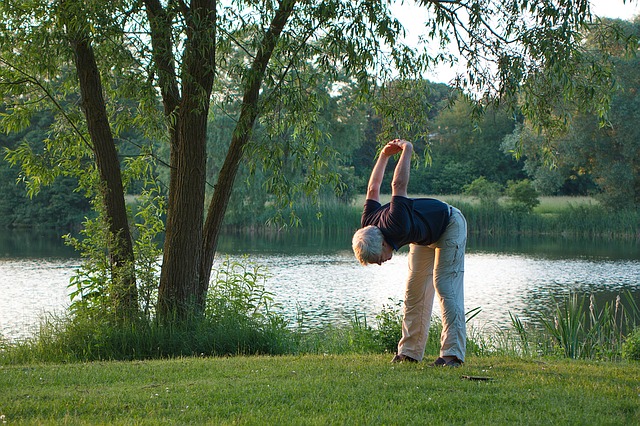Planning for a practice – What is course planning and why do we do it?
Most yoga practices include āsana (the practice of physical postures), prāņāyāma (working with the breath), and dhyāna (meditation). Normally between 5 and 12 physical postures or āsana are practiced daily. How do we choose which postures to practice? Do we choose and practice them randomly? Or is there a system or method that takes us from one place to the next?
One of the definitions for yoga āsana is nāva śarīra samskāra. That is nāva (new), śarīra (body) and samskara. Samskāras are patterns or habits built through experience and repetition. They can be beneficial or not depending on how they manifest.
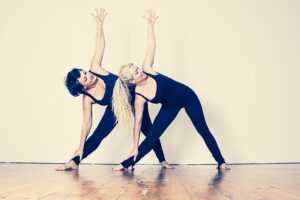
For example, I know a talented artist who carves bone. He sits on a small stool for many hours of the day with one leg crossed, one hand holding a piece of bone, and the other applying the carving tool. While the art he produces is truly amazing, he has also manifested physical pain and a reduced range of motion due to his working posture.
For this man, practicing yoga postures is as much about relieving pain and undoing years of poor posture, as it is about creating a new, healthier way of sitting and working. This can be achieved only in a carefully planned and executed practice. Practicing daily, he can become aware of what he did in the past, and what he is doing now. The end result, or goal is for him and his body to learn a new way. In essence he is creating a new, healthy pattern in his body.
Yoga is a Science, an Art, and a philosophy
Yoga is an ancient science, art and a philosophy put together with clear intention. That intention is to bring us back to ourselves and to relieve suffering. How we go about achieving this is individual and unique to each person. So, everyone’s practice is ideally developed especially for them.
When sequencing a yoga practice the postures are arranged in such a way that we prepare the body, mind, and breath for what is coming, compensate for our own unique needs, and end by coming back to a neutral position. Many factors are taken into consideration including personal desires and capabilities, time of day the practice is performed, and the demands of individual lifestyles and professions. All of this is viewed through the lens of what you hope to gain from the experience.
We sequence or plan for āsana practice for 3 reasons.
- To achieve the qualities of the āsana.
- To experience the form and function of the practice.
- Ahiṁsa – to cause no harm.
The qualities of āsana (the physical postures of yoga)
Many ancient yoga texts talk more about the qualities of āsana than about the postures themselves. This is true of one of the most important guides to yoga, Patañjali’s Yoga Sūtras (Y.S.) In fact, Patañjali doesn’t mention any individual postures. He mentions āsana only a few times and of these only two are directed at how to practice. Y.S Chapter 2 sutras 46 and 47 describe the qualities of physical postures and how to achieve them.
Y.S. 2.46 Sthirasukhamāsanam
Sthiram and sukham are two of the most important identifying characteristics of āsana practice. Sthiram is steadiness, attentiveness, firmness and stability. Sukham is ease, comfort, openness and relaxation. When we respect our body as its own amazing and intelligent being, we can accept discomfort or ease as messages telling us which way and how far to go. Sthiram and sukham become the method and the goal. By using the qualities of openness, ease and comfort, our entire system becomes receptive. Our shields come down, and life’s energy moves more smoothly.
The story of Adiśeṣa (Ah-dee-SHEH-shah) is a mythological story that explains this concept. Adiśeṣa is the first servant of Lord Vishnu, the preserver and protector of the universe in Hindu mythology. In the story, Adiśeṣa, in the form of a 1000 headed serpent, supports the universe on its many heads, while providing a comfortable and relaxing seat for his lord. At the same time, he deals with the uncertainty of an enemy (an eagle), flying nearby. As a metaphor for sthiram and sukham, we seek to find balance and strength along with comfort and relaxation. It’s one thing to find ease and comfort in good times. Can we also do so during uncertainty or down right difficulty? Click here to read more about Adiśeṣa.
How to Achieve these Qualities.
In the next sutra, 2.47, Patañjali goes on to describe how to achieve the qualities of sthiram and sukham in āsana practice. He says that through:
- Appropriate effort (prayatna)
- Releasing resistance (śaithilya)
- Connection with the eternal breath (ananta)
- And deep focus and attention (samāpattibhyām)
Our practice becomes a kind of meditation at the physical level that can lead to deeper equanimity and resilience. In other words, we begin to find space for new things to happen. Then, sometimes, rather than reacting the way we always have, we experience a moment to choose our most appropriate action or way of being.
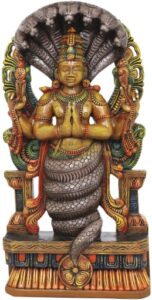
Prayatna, Appropriate Effort
What is appropriate effort? In the United States there seems to be a prevailing culture about exercise generally summed up as “No Pain, No gain.” While this may be true for some forms of exercise, it is not true for yoga. The practice of yoga āsana is more than about moving the body; it is more than stretching and getting a workout.
As we go through each posture, we must pay close attention to what’s going on with the body, breath, and mind. This attention or focus takes us inside ourselves where we can see our limitations, patterns, feelings, and thoughts. Appropriate effort means working comfortably within our physical, mental, and emotional limits. As we practice, the margins change, more space is created and little by little as we move closer to our goal.
Appropriate effort means the body is comfortable, stable, and strong (sthiram and sukham). Action is taken, but there is no shaking, strain, or trembling. The breath remains long and smooth, and all the while, the mind is attentive to the sensations taking place.
Śaithilya, Releasing Resistance
Resistance happens when something is stuck and doesn’t want to move. It can be physical, mental, emotional and in relationship. Many times, we aren’t even aware of our reluctance, especially when its mental or emotional. At these times, we come up with all kinds of reasons why we are unable to do what is needed to change. Resistance can manifest as an inability to practice, internal or external conflict, confusion, physical pain, depression, anxiety, and many other forms of suffering.
Resistance is created through repeated experiences or past patterning, called samskāras in Sanskrit. When we do something over and over it becomes a pattern. The pattern can be physical (like a roofer having difficulty with their knees and shoulders because of repeated bending and using heavy tools) but can also be mental or emotional (like having a belief that isn’t working for us). Most often all parts of the system are involved.
When we meet resistance, how do we handle it? What is your natural inclination? Do you push through, or run away? Something else?
I teach a therapeutic group class at our local yoga studio. Recently, one of the students commented that she loved the premise of the class and felt like she was making progress, yet she wished the class was more physically challenging. She felt that she needed to push through the difficulties with her body, forcing them to do as she wished, even if pain was involved. She wanted to use yoga postures to get a “good workout” and “fix” her frozen shoulder at the same time.
But the harder she pushed, the stiffer her shoulder became. Soon her neck and jaw were also stiff and sore. Finally, she softened and accepted her limitations. She allowed herself to stay comfortable. Only then did her shoulder begin to open. Slowly, step by step, breath by breath, she regained full range of motion in her arm.
Ananta, Connection with the eternal through the breath.
Breath is a bridge connecting the physical body to the energy body of thoughts and emotions. The breath also connects us to an infinite body of universal life energy we call prāņa. The act of breathing not only delivers oxygen but also serves as a vehicle for this universal animating force. See more about prāņa here.
Breath is one of the few body functions that is both automatic and voluntary. Our body breaths itself somewhere between 12 and 20 times per minute, 24 hours per day, every day, for our entire lives. However, unlike our heartbeat, we can directly control our breath. With conscious awareness, breath becomes a powerful tool helping release resistance and bring healing and resilience.
The breath is also an indicator of when things aren’t going so well. When we are stressed, worried, in pain or otherwise suffering, the breath changes. At these times, breathing can become shallow and agitated, or we may want to hold our breath or sigh.
In the practice of āsana, we want to consciously engage the breath, synchronizing each movement while keeping the breath long and smooth. With awareness of our breath, slowly, step by step, resistance falls away, and we move toward wholeness and wellness. If too strong an exertion is put forth, the breath is the first thing to change.
Samāpattibhyām – Deep focus or Meditation.
Have you ever gone to a yoga class and completely lost track of time? It may have seemed like the class had just started and the hour was over already. This happens when we are completely absorbed in the practice. It’s called dhyānam or meditative absorption.
When we achieve sthiram and sukham and our physical practice is directed at the internalization of the life force, the practice becomes a form of meditation at the level of the body. This is the sweet spot where magic happens. The more one gets in touch with the state of their emotions, the more we are able to relax. The more we can relax, the more clearly, we are able to see our past conditioning. With clarity comes choice. A little space opens up and little by little, movement can be made in a direction of our choosing.
When our āsana practice is well-sequenced and preformed daily, we are able to move towards our choices with more ease. We create a body that is resilient, both internally and to the external environment, while at the same time releasing old patterns of suffering and resistance. Yes, yoga āsana is more than a physical exercise. The best part is, whatever effects the body, affects all other parts of our system.

We Practice Yoga to Have an Experience
We do postures because we wish to have an experience. We do this for ourselves, not for how they look or as a form of competition. We want something for ourselves, and so we practice yoga.
Everything in life has a beginning, a middle and an end. In terms of āsana that means we start where we are, in this present moment. Every day we change, our body changes, as does our mind and emotions. One day we may find our breath is long and smooth. The next day we have allergies and can’t even breath through the nose. The same is true of our physical condition. One day we are comfortable and happy in a position like vīrbhadrāsana (warrior pose). The next day we must modify the pose because of an injury to the back or shoulder. This is as it should be.
As we practice, we gain clarity about our condition and our capabilities in the moment. With clarity we change how we perform the pose. Ease, openness and stability, sthiram and sukham, are both the practice and the goal. Each day, in each pose we continuously observe sensations, feelings and thoughts. Every day we do the same posture and every day we find something new.
If there is tension or pain in part of the body, it’s almost impossible to focus on anything else. The focus always goes to that area. When force is applied in an attempt experience the body in the way we did the day before, problems arise. More pain or even injury results from pushing beyond the capacity of the body. Instead, we seek to accept ourselves exactly how we are. Then, when doing the posture ask, do I need more preparation today? What modifications do I need to achieve the function?
Coming up next – Form and Function in Āsana Practice.
Further Reading

The Benefits of Mantra and Chanting
The practice of mantra and chanting is experiencing a new popularity in modern spiritual and yoga practices today. But they are not new. Mantra and

Healing the causes of suffering – A four-step model for healing
Yoga Therapy as a Healing Modality Offerings like “Yoga for Back Pain” and “Yoga for Stress Relief” are common, and seemingly increasing every day. But

An Herbal Interlude with Oregano
Oregano (Origanum vulgar) Table of Contents Family – Labiatae or the Mint Family About Oregano Common Garden Oregano is an easy to grow addition to any

An Herbal Interlude with Catnip
Catnip – Nepeta cataria Family – Lamiaceae, the mint family Table of Contents Common Names Catnip is also commonly called Catmint, Catswort, Catnep, and Field

Natural Solutions for Shingles
Dear Annie, I have shingles; it is painful. Is there anything that can help? OH, Dear Friend, I’m so sorry. Shingles can be very painful.

An Herbal Interlude with Common Mullein
Common Mullein (Verbascum Thapsus) Family –Scrophulariaceae or the figwort family Table of Contents My friendly Mullein Rant Common Mullein is one of the top 10

An Herbal Interlude with Black Cumin (Nigella sativa)
Black Cumin (Nigella sativa) Family – Ranunculaceae or Buttercup family Black Cumin is an AMAZING herb. I became aware of it only recently during my

An Herbal Interlude With Arnica
Arnica Botanical Names Arnica cordifolia, A. chamissonis, A. montana, and others More years ago than I can count, Arnica was one of the first plants

Bee Stings and Bug Bites
This summer my family has been hanging out in the pool almost every day. It’s a small pool, but big enough to float around and

Natural Solutions for Peripheral Edema
Dear Annie, do you have any ideas about using natural solutions for peripheral edema or swelling in the legs? I have edema in my left
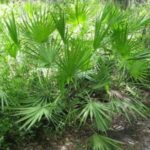
An Herbal Interlude with Saw Palmetto
Saw Palmetto is the gold standard for male reproductive issues. It also has affinities for the respiratory, digestive, immune and the genitourinary system.

Benign Prostatic Hyperplasia (BPH)
Benign Prostatic Hyperplasia (BPH) is a chronic condition that affects 50-60% of all men over the age of 60. The good news is that Men have been successfully using herbs and yoga therapy to manage the problem for well, almost ever.

Prostate Enlargement with High PSA Levels
Dear Annie – Can you offer any direction for prostate enlargement with high PSA Levels? I am a 70-year old man and have been going

Natural Treatments for Giardia
Natural treatments for giardia involve a multi-dimensional approach. First we must stop the parasites growth, next we’ll want to support gut health and more

COVID19 Closing of the Lungs
The next stage of illness is called COVID19 Closing of the lungs or the Plague Closes the Lungs. Yuck! And that pretty much sums it

Fever from an herbalists perspective
Hello Plant Friends, For the past few weeks, we’ve been talking about the COVID-19 virus. Focusing on symptoms, stages of progression and treatment strategies. This

Prevention of COVID-19 from an Herbalist Perspective
Using foods and herbs as prevention strategies, we want to focus on a healthy lifestyle and strengthening our bodies natural built-in defenses.

Herbal/Drug Interactions and Blood Thinning Medications
Dear Annie, I am at a loss since I began taking blood thinners last year. I love all my herbs and essential oils, but have been cautioned by my pharmacist not to use them. Please tell me more about the interactions between herbs and blood thinning medications.

Natural Solutions for Acid Reflux and GERD
Over 60 million Americans experience acid reflux (also known as heartburn) at least once a month. Some studies suggest that more than 15 million Americans, or about 18% to 27% of the total population, experience heartburn symptoms daily.

Urinary Infections in Dogs
Herbs that may help prevent urinary infections in dogs, as a side benefit, may also help with urinary incontinence and tone the colon wall.

Erectile Dysfunction Following Prostate Surgery
Dear Annie, I had my prostate removed due to cancer about 8 months ago and am now having problems with intimacy. Would a testosterone booster help? Any other ideas?

An Herbal Interlude with Blessed Thistle
Blessed Thistle was considered a heal-all in medieval Europe where it was used as a primary treatment for the bubonic plague. Today it’s used to improve digestion and to treat liver and stomach problems.
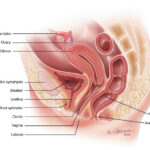
Natural Solutions for Abdominal Organ Prolapse
Dear Annie, I was diagnosed with bladder prolapse. The doctor recommends surgery. I’d like to avoid surgery. Is there anything I can do?
Thank you, this is a great question. There are several natural solutions that can help reduce symptoms and support the abdominal region and pelvic floor.

Natural Solutions for Hair Health
Dear Annie, What would you suggest I look for in a hair serum to promote scalp, Hair health and growth? Since the birth of my son 5 years ago, I’ve noticed my hair thinning. I don’t feel like I’m losing my hair but notice a lot on my brush and it feels like my hair is thinner.
The consistency of hair can often change at different times in life and is often connected to a major life change, like having children, menopause, age or illness. Hair (all over our body) is linked to the health of the entire system and is an indicator of your overall state of health.

Yoga and Healing – The Concept of Prāṇa
Yoga – the Ageless Science of Connection through Body, Mind and Breath The concept of prāṇa is an important component in the practice of yoga.
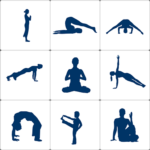
Yoga Āsana – the Ageless Science of Connection through Body, Mind and Breath
Pañcamaya as it relates to Āsana What is Āsana? Āsana are the physical movements or postures of yoga. A lot of people think of yoga
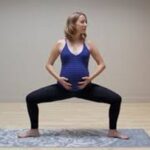
Yoga during Pregnancy
“Yoga is about creating harmony within oneself and to create that harmony while pregnant meant my practices had to honor as well as include the
References
https://www.rryogaroom.com/the-yoga-room/2017/5/2/the-story-of-adisesa
Patanjali’s yoga sutra
Many years of personal notes from workshops and work with personal teachers.

